Wireless and Photonic Integration: Putting the Pieces Together
Given consumer demand for mobile products that offer more services in real time, designers need to take advantage of the most effective technologies available – wireless and photonic.
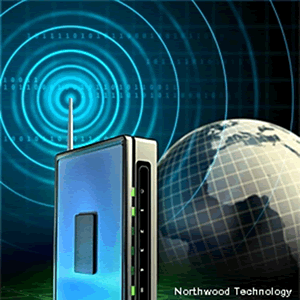 They say oil and water don’t mix, and for the most part that is true. To some degree, the challenges associated with mixing wireless connectivity and optical data communication into the design of purely electronic products can be equally daunting. Given consumer demand for mobile products that offer more services in real time, designers need to take advantage of the most effective technologies available, especially as we continue to move toward the Internet of Things.
They say oil and water don’t mix, and for the most part that is true. To some degree, the challenges associated with mixing wireless connectivity and optical data communication into the design of purely electronic products can be equally daunting. Given consumer demand for mobile products that offer more services in real time, designers need to take advantage of the most effective technologies available, especially as we continue to move toward the Internet of Things.
The ubiquitous smartphone has emerged as the go-to device for everything from communication to entertainment. Legions of apps enable a growing list of devices that can be remotely controlled. Admittedly, some of these applications border on the frivolous – such as one that allows your washing machine to send text messages to alert you to a completed cycle – to downright silly – like wireless dinner plates that use cameras to identify your food and calculate its caloric content as part of a weight-loss program. Many others bring real value including remote monitoring of vital signs, home security, and environmental management. Marketing managers are on the prowl for devices that can be enabled with their own IP addresses. Wireless communication is an integral aspect of these applications.
How can a design engineer cope with demands for devices that are smaller, faster, and consume less power while featuring wireless mobility? Integration of a bi-directional radio into a product may require engineers with RF experience, including antenna design (itself considered a black art). Costly new test equipment to verify performance to specification may be necessary. Critical issues including electromagnetic interference (EMI), power consumption, and internal shielding must be considered. Concern about security will require measures be built into the device. Interoperability among a host of linked devices is an absolute requirement. Against the complexity of all these requirements, the operation of the final product must be reliable and intuitive. Users shun complications such as inscrutable passwords to just plain ugly user interfaces.
Selecting the most effective wireless protocol for the specific application is critical. Options range from short-range Bluetooth and ZigBee to Wi-Fi and cellular wireless technology.
Fortunately, the process of integrating wireless connectivity is being simplified by the availability of complete transceiver system-on-chip (SOC) modules that can be dropped into the design of a new product.
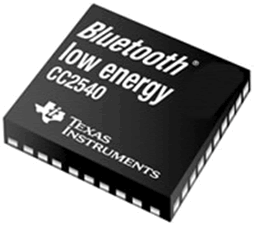
Module suppliers are providing reference designs that minimize much of the trial and error process that typically plagues the introduction of new technology so that product designers can focus on hardware and software features of their products.
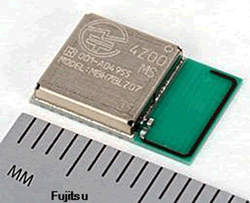
Bluetooth modules continue to shrink, and many include an integrated antenna further simplifying and speeding the design-in process.
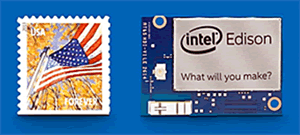 The Intel Edison development platform is a low-cost general computer platform that features both Bluetooth 4.0 and dual-band Wi-Fi on a single postage-stamp-sized module. This integrated module is targeting the development of products that will be connected to the Internet of Things.
The Intel Edison development platform is a low-cost general computer platform that features both Bluetooth 4.0 and dual-band Wi-Fi on a single postage-stamp-sized module. This integrated module is targeting the development of products that will be connected to the Internet of Things.
Utilizing these off-the-shelf solutions reduces time to market and engineering resources as well as provides assurance that the first iteration of the product will meet expectations.
Fiber optic cables have been used for years in long-haul communication channels, but much shorter links are now becoming economically practical. Fiber offers nearly unlimited signaling bandwidth with much lower signal attenuation weight and bulk than traditional copper cables. Over the past 20 years, fiber optic components have experienced major improvements in performance and durability while the associated connectors now feature a simplified termination process. These advances have been accompanied by a continuing trend of lower costs, a factor that has hindered the utilization of fiber in the past. Fiber optic links can now be economically feasible for distances as short as a few meters, and have recently started to invade applications inside the box. Fiber offers a great solution to demand for increased I/O port density. Designers unfamiliar with optical interconnects must understand the importance of link budgets, fiber termination options, eye safety, characteristics of single versus multimode fiber as well as specialized equipment required for field repair.
The use of active optical cable assemblies in I/O applications requires little adaptation from standard copper assemblies. These cables mate with standard copper interfaces with the electro-optic conversion process that occurs inside the strain reliefs, which makes the transition invisible to the installer.
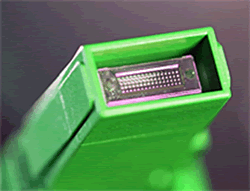 Major advances in fiber optic connectors have simplified the ability to shuttle multiple signals in and outside of the box. The new MXC optic connector features expanded beam technology, reduced mating force, more predictable loss characteristics, and blind mateablity. This high-density connector can handle up to 64 fibers per ferrule. Applications will include internal optical links to the I/O panel or the backplane.
Major advances in fiber optic connectors have simplified the ability to shuttle multiple signals in and outside of the box. The new MXC optic connector features expanded beam technology, reduced mating force, more predictable loss characteristics, and blind mateablity. This high-density connector can handle up to 64 fibers per ferrule. Applications will include internal optical links to the I/O panel or the backplane.
More recently, fiber optic devices are appearing on printed circuit boards. True optical backplanes have been in development for many years, but their cost and degree of change from standard PCB fabrication technology has limited their use. On the other hand, packaged optical transceivers are experiencing significant growth. Engineers want to take advantage of the bandwidth offered by fiber and find mid-board optical transceivers to be a possible solution. These small transceivers can be mounted anywhere on a board and are being used to take very high-speed signals to another area on the board, to another board through the backplane, or to an external I/O port.
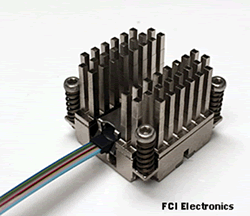 Consideration must be given to the space and power consumed as well as heat generated by an optical transceiver says Dave Sideck, global strategic marketing manager at FCI. Basic choices between single and multimode fiber allow flexibility in the length and performance of the link.
Consideration must be given to the space and power consumed as well as heat generated by an optical transceiver says Dave Sideck, global strategic marketing manager at FCI. Basic choices between single and multimode fiber allow flexibility in the length and performance of the link.
Nothing remains static in the world of electronic devices. System designers must constantly reconsider what the adoption of new technologies can do for their products. There is no doubt that the growth of wireless and optical interconnect technology will impact the market for traditional copper connectors. High-performance signal and power interfaces used in the infrastructure will grow, as networks are upgraded to support increasing bandwidth. Many of the literally billions of remote sensors will be deployed in harsh environments, increasing demand for small ruggedized connectors.
Merging entirely different technologies can be a challenge, but component suppliers are introducing new solutions that can simplify the process and reduce risk. Program management for DesignCon 2016 recognized the concern associated with this issue and dedicated one entire technical presentation track to wireless and photonic integration. Expertise in radio and optical communications is becoming a hot commodity among design engineers.
- Optics Outpace Copper at OFC 2024 - April 16, 2024
- Digital Lighting Enhances your Theatrical Experience - March 5, 2024
- DesignCon 2024 in Review - February 13, 2024




